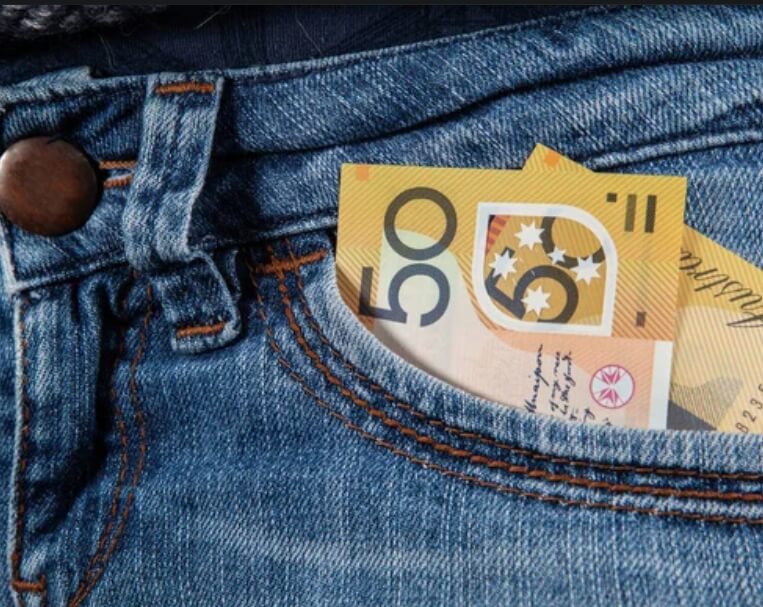
Australian Dollar gains ground ahead of the release of China’s Trade Balance data on Monday.
The AUD appreciates as last week’s robust July Trade Surplus and stronger Q2 GDP data reduced RBA rate cut bets.
The US Dollar softened after downbeat August jobs data strengthened expectations of Fed rate cuts.
The Australian Dollar (AUD) extends its gains against the US Dollar (USD) on Monday, following more than 0.5% gains in the previous session. The AUD/USD pair gained ground as the US Dollar weakened after weaker-than-expected August jobs data heightened concerns over a slowing economy and reinforced expectations of United States (US) Federal Reserve (Fed) rate cuts.
The AUD also draws support as last week’s solid July Trade Surplus and Q2 GDP figures eased expectations of additional Reserve Bank of Australia (RBA) rate cuts. Swaps are now assigning nearly a 90% probability that the RBA will keep policy unchanged in September, while the likelihood of a 25-basis-point rate cut in November has eased to 80% from 100%.
Australia’s Trade Balance increased to 7,310 million month-over-month in July, from 5,366 million the prior month. The trade surplus widened against the expected decline to 4,920 million. Gross Domestic Product (GDP) rose by 0.6% quarter-over-quarter in Q2, following the 0.3% growth in Q1 and surpassing the expectations of 0.5% expansion. Meanwhile, the annual Q2 GDP grew by 1.8%, compared with the 1.4% growth in Q1, and was above the consensus of a 1.6% increase.
Australian Dollar rises amid rising Fed rate cut bets
The US Dollar Index (DXY), which measures the value of the US Dollar against six major currencies, is edging higher and trading around 97.90 at the time of writing. The CME FedWatch tool indicates a pricing in 92% of a 25-basis-point (bps) rate cut by the Fed at the September policy meeting, up from 86% a week ago, with bets rising on a potential 50 bps reduction this month.
Federal Reserve (Fed) Bank of Chicago President Austan Goolsbee said in an interview on Bloomberg TV on Friday that he is still unsure whether September is the right time for an interest rate cut, following weaker jobs data. He added that high inflation data is still cause for concern, and key Fed officials may not be fully sold on a September rate cut.
The US Bureau of Labor Statistics (BLS) reported on Friday that the US Nonfarm Payrolls (NFP) rose by 22,000 in August, falling short of the market expectations of 75,000. This figure followed the 79,000 increase (revised from 73,000) recorded in July. Meanwhile, the Unemployment Rate increased to 4.3% in August, as expected, against the 4.2% prior. Average Hourly Earnings increased 0.3% MoM in August, in line with expectations.
Reuters reported late Thursday that US President Donald Trump said that his administration would impose tariffs on semiconductor imports from firms not moving production to the United States. Moreover, the Trump administration is set to begin renegotiating the US-Mexico-Canada free trade deal, according to The Wall Street Journal.
The US Initial Jobless Claims rose to 237K for the week ending August 30, against the previous reading of 229K. This figure came in above the market consensus of 230K. Meanwhile, ADP Employment Change showed that employment rose by 54,000 in August, which came in below the expectation of 65K. This reading followed a 106K (revised from 104K) increase recorded in July.
China’s Caixin Services Purchasing Managers' Index (PMI) unexpectedly rose to 53.0 in August from 52.6 in July. The data came in above the market forecast of 52.5 in the reported period. Caixin Manufacturing PMI jumped to 50.5 in August from 49.5 in July. It is worth noting that any change in the Chinese economy could influence AUD as China and Australia are close trading partners.
Australia’s Monthly Consumer Price Index rose 2.8% year-over-year in July, beating both the previous 1.9% increase and the 2.3% forecast. The hotter inflation in July dampened the likelihood of a Reserve Bank of Australia (RBA) rate cut anytime soon, continuing to provide support for the Australian Dollar.
Australian Dollar rises above 0.6550 toward seven-week highs
AUD/USD is trading around 0.6560 on Monday. The technical analysis of the daily chart shows the pair remains within the ascending channel pattern, indicating the market sentiment is bullish. Additionally, the pair is positioned above the nine-day Exponential Moving Average (EMA), indicating short-term price momentum is strengthening.
On the upside, the AUD/USD pair may target the seven-week high of 0.6588, reached on September 5, followed by the upper boundary of the ascending channel at around 0.6610. A break above the channel would strengthen the bullish bias and support the pair to test the 10-month high of 0.6625, which was recorded on July 24.
The immediate support appears at the nine-day EMA of 0.6534, aligned with the ascending channel’s lower boundary. A break below this crucial support zone would weaken the bullish bias and prompt the AUD/USD pair to test the 50-day EMA at 0.6507. Further declines would dampen the medium-term price momentum and open the doors for the pair to navigate the region around the three-month low of 0.6414, recorded on August 21.
AUD/USD: Daily Chart

Australian Dollar Price Today
The table below shows the percentage change of Australian Dollar (AUD) against listed major currencies today. Australian Dollar was the strongest against the British Pound.

The heat map shows percentage changes of major currencies against each other. The base currency is picked from the left column, while the quote currency is picked from the top row. For example, if you pick the Australian Dollar from the left column and move along the horizontal line to the US Dollar, the percentage change displayed in the box will represent AUD (base)/USD (quote).
* The content presented above, whether from a third party or not, is considered as general advice only. This article should not be construed as containing investment advice, investment recommendations, an offer of or solicitation for any transactions in financial instruments.


